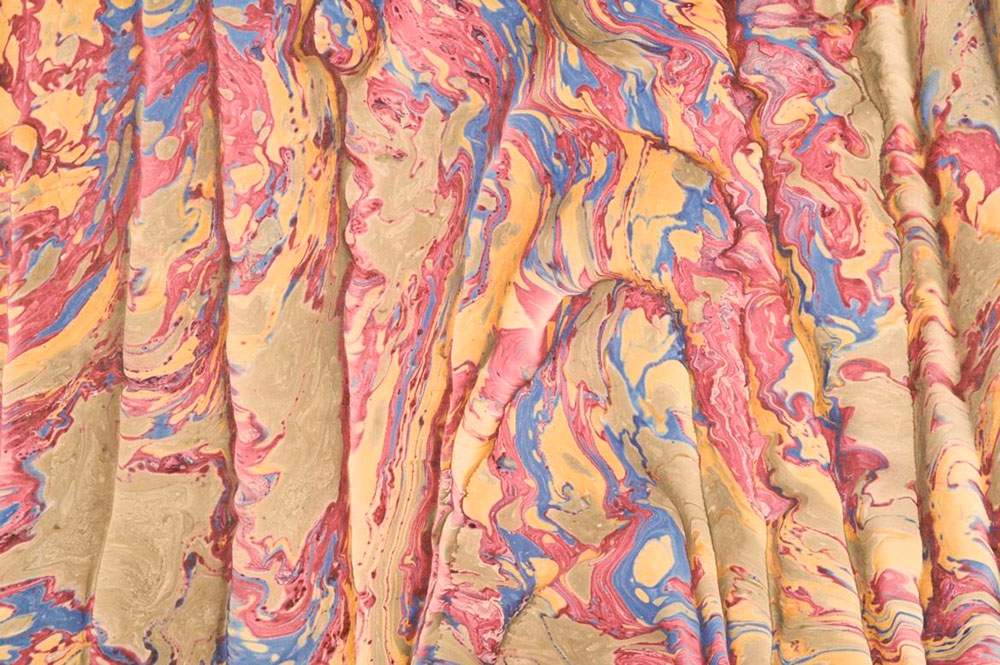Until May 5, 2019, the Castello del Buonconsiglio in Trento presents an exhibition that tells the story of marbled paper and its spread through the centuries and places, from East to West.
Its origin is very old, dating back to the 12th century and coming from Japan; it spread to Turkey and later reached Europe during the 16th century.
Through a wide selection of marbled papers, including some made by contemporary artists such as Philip Taaffe, Ugo Zovetti and Alberto Valese and some videos by Turkish artist Garip Ay, as well as through ancient books and objects bound or covered with this particular type of paper, visitors to the exhibition Floating Colors: Marbled Paper between East and West can trace the history of this technique and discover the uses that people have made of it over time, from decorative to meditative and even for predicting the future.
In each country this technique is named differently: Suminagashi (’floating ink’ in Japan), Ebru (’cloud’ in Turkey) and Marbled paper in Europe(marbled paper, paper marbré) from its obvious resemblance to the veining of marble.
In Japan, Suminagashi is documented as early as the 12th century, but in China there are records of it even earlier: it is a technique that requires patience and technique, as it derives from theart of calligraphy, and slate stone, an ink stick, a brush and rice paper are used to make it. Preparing the ink involves rubbing the stick and a few drops of water on the slate stone; the next step involves making concentric centers floating on the surface of the water, using the tip of the brush and alternating ink with ox gall.
In Turkey this technique arrives along the Silk Road, and the difference from Japan is in the creation of decorative motifs inspired by animal and floral forms, usually birds and tulips, the symbol of the Turkish country, to the composition of landscapes and portraits.
Between the fifteenth and sixteenth centuries, Istanbul is one of the centers of major diffusion of the art of marbling: it thus arrives in sixteenth-century Europe: here it is inspired by the veining of marble, but unlike Japan and Turkey this technique is used only for practical and ornamental purposes and not for spiritual and meditative reasons. Between the seventeenth and eighteenth centuries it is mainly used in bookbinding to embellish volumes or to cover, in the Baroque era, objects.
On weekends, visitors can watch the various stages of papermaking and then experience it firsthand, creating colorful papers for conservation.
Also planned is a workshop run by the curator of the exhibition, Lorenzo Pontalti, together with students from the Liceo artistico ’A. Vittoria’ of Trento, trained by the museum’s Educational Services in a school-to-work alternation project.
For info visit the Visittrentino website
Hours: Daily from 9:30 a.m. to 5 p.m. Closed Mondays.
Free admission.
 |
| Marbled paper. The Castello del Buonconsiglio dedicates an exhibition to this technique spread from East to West |
Warning: the translation into English of the original Italian article was created using automatic tools. We undertake to review all articles, but we do not guarantee the total absence of inaccuracies in the translation due to the program. You can find the original by clicking on the ITA button. If you find any mistake,please contact us.